When it comes to capturing the beauty and intricacy of jewelry, photography becomes an art form. At Finer Custom Jewelry, we deeply understand the significance of showcasing our pieces in the most captivating way possible. The artistry involved in jewelry photography goes beyond documentation; its purpose is to evoke emotions and emphasize the craftsmanship and meticulous attention to detail that is poured into each individual piece.
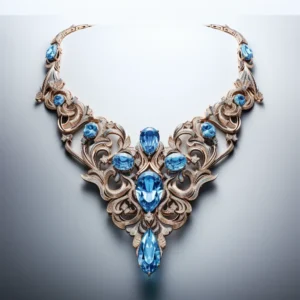
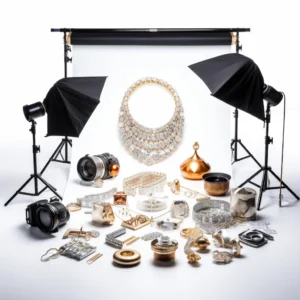
Good lighting not only enhances the sparkle and brilliance of the jewelry but also helps create shadows that add depth and dimension to your photos. Soft lighting sources should be used to eliminate harsh reflections and make the details of the jewelry more visible. Experimenting with angles and intensities of light can help achieve the desired effect. When photographing vintage pieces, such as “Dallas Vintage Jewelry,” proper lighting becomes even more crucial to highlight the unique characteristics and history of each item.
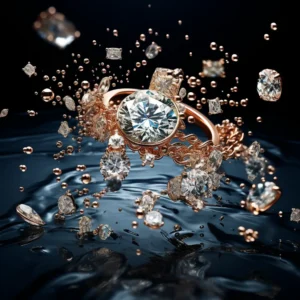
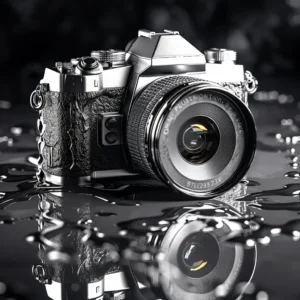
To avoid reflections, a lightbox or a light tent can create a lit environment that reduces reflection issues. Properly positioning the jewelry is also important to minimize shadows. Adjusting the angles of lights or using reflectors to fill in any shadows will help create a balanced and well-lit photograph. Consider using a polarizing filter on your camera lens to reduce glare and reflections. When photographing unique pieces, such as “Scottsdale unique Jewelry,” these techniques become essential to capturing their distinctiveness and craftsmanship effectively.
To highlight the intricate details, it is crucial to have a focus. Use a tripod for stability and avoid camera shake. Set your camera to focus mode and zoom in to manually focus on the main focal point. Use a high aperture (a high f-stop number) to increase the depth of field and keep more of the jewelry in focus. Take multiple shots with slightly different focus points and merge them together during post-processing for a sharp image. When photographing pieces from Dallas Jewelry Collections, these techniques are particularly effective in capturing the craftsmanship and elegance of each piece.
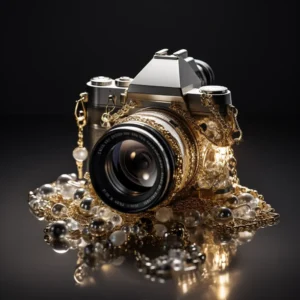

The composition of your jewelry photographs plays a role in creating visually appealing images. Follow the rule of thirds and place the focal point of the jewelry off-center to add interest and balance to the image. Experiment with angles and viewpoints to showcase various perspectives of the jewelry. Use props sparingly but strategically to add context or enhance aesthetics. Consider negative space to allow the jewelry to stand out. Choose a background that complements the jewelry. When capturing images of jewelry, including pieces from Handcrafted Jewelry Houston, these principles can enhance the presentation and highlight the unique craftsmanship of each piece.
After capturing jewelry photographs, employ post-processing techniques for enhancement. Adjust exposure, brightness, and contrast to tune the overall look of the image. Sharpen areas to increase detail and make the jewelry stand out. Remove any dust, scratches, or imperfections for a flawless image. Adjust the balance for accurate colors. Crop or resize the image to eliminate distractions and cater to specific usage needs.

Although natural light can be used for jewelry photography, it can pose challenges in terms of control and consistency. Shoot near a large window with diffused light or during cloudy days for more even lighting conditions. Use additional tools such as reflectors or diffusion panels to modify light. While smartphones may not match the power of cameras, they have advanced significantly in terms of camera capabilities. With lighting techniques and accessories like clip-on macro lenses, satisfactory results can be achieved for social media or casual jewelry photography.

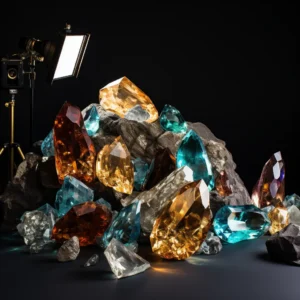
Photographing gemstones and metals like diamonds or silver requires special attention. Use a lightbox or a light tent to diffuse light and minimize reflections. Properly position lights to avoid reflections on highly reflective surfaces. Experiment with angles and utilize anti-reflective sprays or gels to reduce unwanted reflections while highlighting the sparkle. Consider using dark reflective backgrounds to create appealing visual contrast.
In summary, jewelry photography is an art that demands the use of lighting techniques, composition, and meticulous attention to detail. Here at Finer Custom Jewelry, we truly appreciate the significance of presenting the detailed nature of our jewelry through captivating photographs. Through the use of equipment, techniques to enhance lighting, and principles of composition, we are able to beautifully capture the essence of each individual piece and elicit deep emotions in those who have the privilege to admire them.
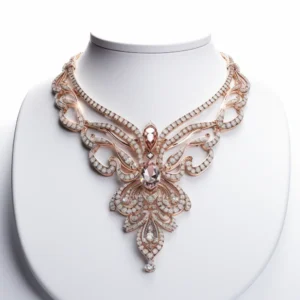
Do you have a vision for your custom engagement ring, but aren’t sure how to make it a reality? Allow us to guide you through the process of how to create truly exceptional rings. Schedule your design appointment today and see how Finer Custom Engagement Rings and Diamonds will bring your vision of an engagement ring to life.
© Copyright Finer Custom Jewelry 2024